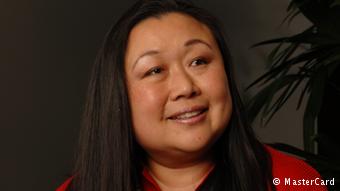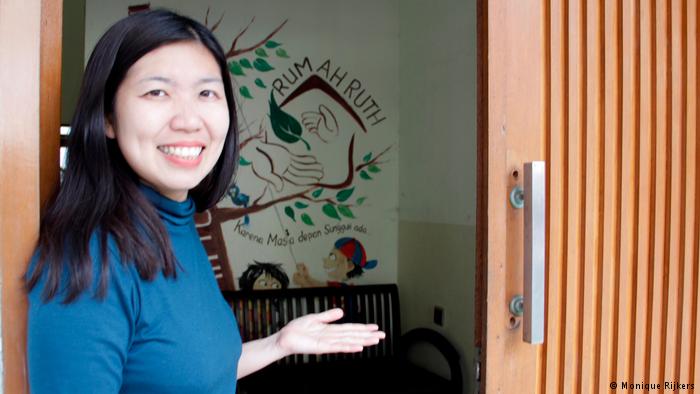Asia-Pacific women ‘under-represented’ in leadership roles
Despite being better educated, women in the region face a host of key issues such as employment discrimination, gender pay gap and a deeply entrenched cultural bias against working women, says MasterCard’s Georgette Tan.
Women in the Asia-Pacific region continue to lag behind men in the areas of business leadership, business ownership, and political participation, although they are increasingly more educated than their male counterparts, revealed MasterCard’s latest Index of Women’s Advancement. The index measures gender parity based on employment, education and leadership opportunities.
In 10 of 16 Asia-Pacific countries that researchers surveyed, women outnumber men in university education. But notwithstanding this success in higher education, women in the majority of countries across the region are lagging behind men when it comes to taking up leadership roles in business and politics, the index concluded.
While it named countries such as New Zealand, Australia and the Philippines as the best countries for women, South Asian nations like Sri Lanka, India and Bangladesh performed poorly, highlighting the need for increased focus on gender issues in these places. However, there are also some positive signs in countries like India and Bangladesh, where there has been a big increase in the number of women taking up regular employment since 2007.
In a DW interview, Georgette Tan, MasterCard’s Group Head of Communications for the Asia-Pacific region, says that although opportunities exist for women to pursue higher levels of education, labor market conditions in the region are not always conducive for women seeking employment and leadership roles.
DW: What did your study find about the state of gender equality in the Asia-Pacific region?
Georgette Tan: The MasterCard Index of Women’s Advancement found that women remain under-represented in Asia-Pacific leadership roles despite progress in tertiary education. While women in 10 of the 16 Asia-Pacific markets surveyed outnumber men in tertiary education, New Zealand (50.6) and the Philippines (50.1) are the only markets with more than 50 women for every 100 men in leadership positions.
Women in the Philippines, Singapore and Indonesia show the most marked advancement in leadership roles since 2007, gaining 12.2, 8.7 and 7.5 index points, respectively.
DW: According to your index, which Asia-Pacific market offers women the most opportunities?
Georgette Tan: Women in New Zealand are afforded the most opportunities when it comes to education, employment and leadership. Overall, New Zealand scores the highest across Asia-Pacific (77.3), and also for each of the 3 main indicators of education (100), employment (91.3) and leadership (50.6).
New Zealand has maintained a gender parity score of 100 in education for nine consecutive years, suggesting that women in the country are on par with their male counterparts in secondary and tertiary education enrolment. New Zealand also has the highest female-to-male tertiary gross enrolment ratio in Asia-Pacific at 146.3.
Although opportunities exist for women to pursue higher levels of education (reflected through the high scores for education), labor market conditions are not always conducive for them in seeking employment and leadership roles.
In terms of employment, New Zealand is close to achieving gender parity, scoring higher than 90 index points. However, women’s progress towards gender parity in leadership remains laggard in New Zealand, although it has the highest overall score in the region.
DW: How has offering better opportunities for women helped the economic development of these countries?
Georgette Tan: According to the United Nations, limited women’s participation in the workforce costs the Asia-Pacific region an estimated $89 billion per year. MasterCard’s Women Power and Economic Growth in Asia report highlights that the economic growth of a market is closely tied with the opportunity offered to half its population – women – and besides access to education, more needs to be done in order to achieve equality and empowerment for this segment.
Comparing historical data between enrollment in secondary and tertiary education with labor force participation rates, the report identifies a clear and positive relationship between rates of secondary education enrolment and productivity per employee.
The relationship continues to hold for tertiary enrolment but it appears that beyond a certain level, there seems to be a weak relationship between an increasing supply of highly educated females and general female labor participation rates.
This means that in addition to education, a range of factors impacting the economic contributions made by women in the workforce needs to be addressed including country-specific socio-cultural factors, traditional beliefs, and government policies.
DW: Which countries have made the biggest strides over the past years?
Georgette Tan: Overall, women in Indonesia (+6.2), Singapore (+6.1), India (+6.1) and the Philippines (+6.1) have made the biggest progress over the past nine years.
Notably, Indian women show the most marked advancement in regular employment since 2007, gaining 30.6 index points, and Filipino women have excelled the most in politics with the number of female-to-male politician ratio doubling from 18.2 in 2007 to 37.3 in 2015.
DW: Which countries in the Asia-Pacific rank worst in the index and why?
Georgette Tan: India (44.2), Bangladesh (44.6), Sri Lanka (46.2) and Japan (48.8) rank the lowest among all Asia-Pacific markets.
 Japanese women lag behind their regional peers across all 3 indicators: employment score of 83.3 compared to regional average of 84.9, education score of 94.8 versus regional average of 96.9, and leadership score of 14.7 versus regional average of 32.2. In terms of leadership positions, Japanese women advanced the least in the region with a score of 14.7 (the lowest in the region), improving only by 0.7 index points over the nine-year period since 2007.
Japanese women lag behind their regional peers across all 3 indicators: employment score of 83.3 compared to regional average of 84.9, education score of 94.8 versus regional average of 96.9, and leadership score of 14.7 versus regional average of 32.2. In terms of leadership positions, Japanese women advanced the least in the region with a score of 14.7 (the lowest in the region), improving only by 0.7 index points over the nine-year period since 2007.
There are various contributing factors to the lower-than-average employment score for Japan. Although Japanese women are fairly highly educated, there exists a deep-rooted expectation for Japanese women to give up their career and remain the primary caretaker of the household after marriage and childbirth.
This is compounded by working conditions that are not always suited or appealing to women (married or single). According to data from the OECD, Japanese women’s participation in the labor force is around 63 percent, far lower than in other developed countries. Furthermore, once women have their first child, nearly 70 percent of them stop working for a decade or more, compared with just 30 percent in the US.
The same deep-seated cultural views are also held by many women and men in India, Bangladesh and Sri Lanka.
DW: What challenges do women still face in the region especially in terms of education and equal opportunities?
Georgette Tan: Some of the key challenges women in Asia-Pacific continue to face include employment discrimination, gender pay gap and a deeply entrenched cultural bias against women working. This is observed in both developing and developed markets where the scores for education supersede that of employment.
Georgette Tan is MasterCard’s Group Head of Communications for the Asia-Pacific region.
Interview: Gabriel Domínguez
Editor: Marjory Linardy
WTO RECOMMENDS
Women face a glass-ceiling at work
Women face inequality in the workplace the world over. That is a fact. We can see this clearly when it comes to pay and promotions. In many, many countries women earn less than men for doing the same job. Conservatively minded men continue to argue that a woman’s place is at home with the children. But women are playing a more and more important role in the workforce everywhere.
More women needed
According to the latest figures released by the Indian Home Ministry, out of the 15,85,117 personnel working in state police forces, only 84,479 or just 5.33% are women. Besides there are only 499 all-women police stations out of a total of 15,000 stations in the country. The figures are absurd and call for an analysis. Is meagre representation of women in the forces, leading to a rise in crimes against women?
India’s women tuk-tuk drivers
If you were to land in Chennai in southern India one of these days, do not be surprised to see sari-clad women with khaki jackets, zipping around the city and ferrying passengers in black-and-yellow tuk-tuks, known as autorickshaws in India.
India’s single women
Over the years, a guiding principle that has helped women like Shabnam, Kanku Bai and Dhuli Bai tide over the really tough times they have faced as single women living in a largely conservative social set up. Every time someone has tried to sideline them or deny them their entitlements they have come together and raised their voice against the injustice instead of blaming their misfortunes on destiny.








